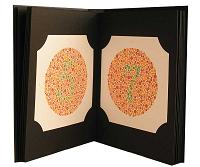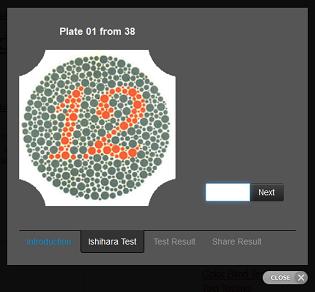I just released one of the oldest, definitely the most well known and definitely by far the most widely used color blindness test on earth: Ishihara 38 Plates CVD Test.
Unfortunately this test is not as good as one would think of:

- The original version detects just forms of red-green color blindness.
- The test is to selective: Even people with normal color vision may fail.
- It is based on a printed booklet. One has to be very careful with the handling.
- Often even eye doctors don’t know how to handle it correctly…
The original test is distributed as printed booklet and it started its tour around the world from Japan early last century. Dr. Shinobu Ishihara published the 38 plates as first version of his test, which is still known under the name Ishihara plates test. After the first test he also released a shorter 24 and even a quick 14 plate version of it.
The online version of this test is not as good as it could be. The scanning of the printed plates altered the colors and therefore the result is not as meanigful as with some other tests which you can find in my arrangement of color blindness tests.

When I take the test myself, I can see some numbers in some of the plates, but a lot of them are just a bunch of dots for me. If my children watch me doing so they always have to giggle, as they can see all the numbers and lines in all of the plates. Of course I know, I’m strongly red-blind and have quite some issues with colors. But in some plates I can’t see the slightes hint of a number! This makes me really think, as my kids easily spot all of them—even if my daughter just recently learned the numbers at all.
Try the Online Ishihara 38 Plates Edition Color Blindness Test yourself and see how you will perform—or not. With this online version of the test it is even possible to share your result with your friends on Facebook, Twitter, or by Email and let them also try the test themselves.
